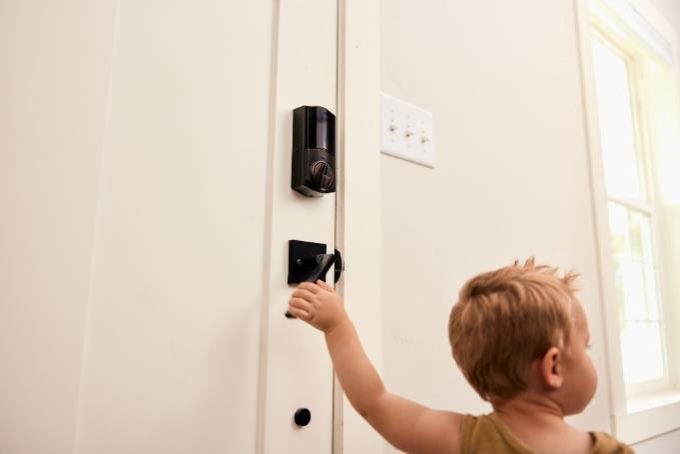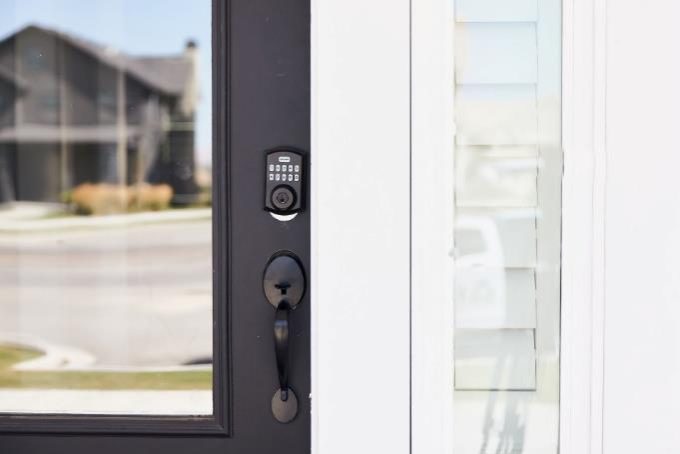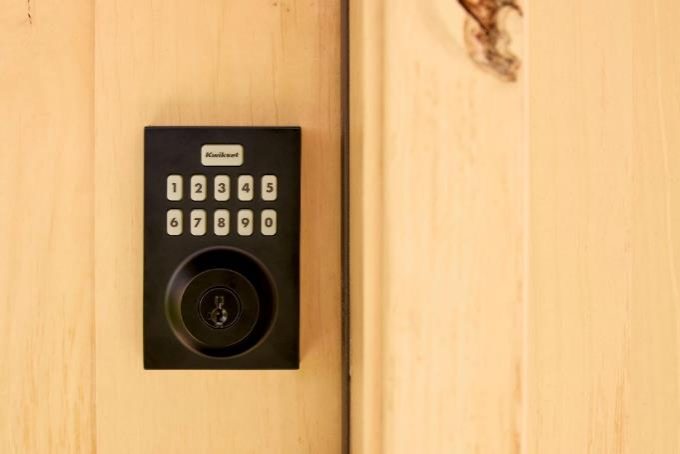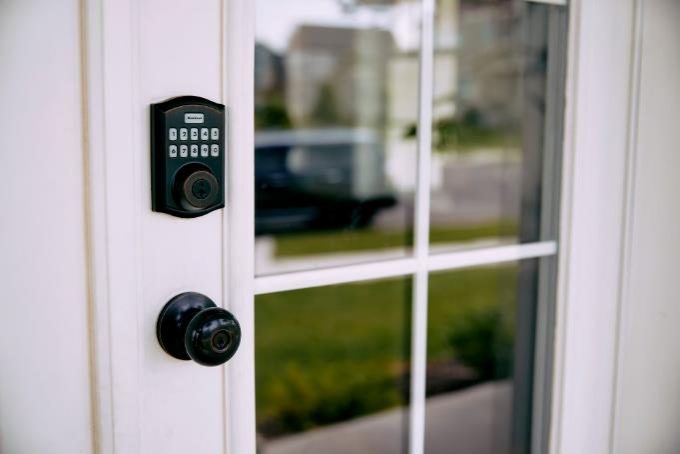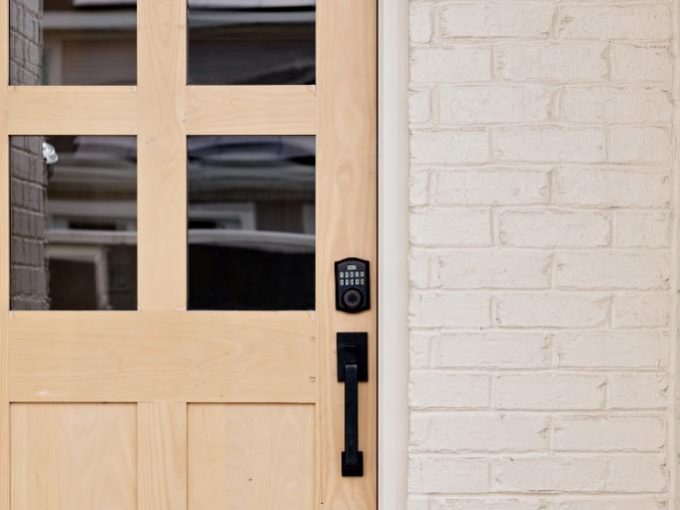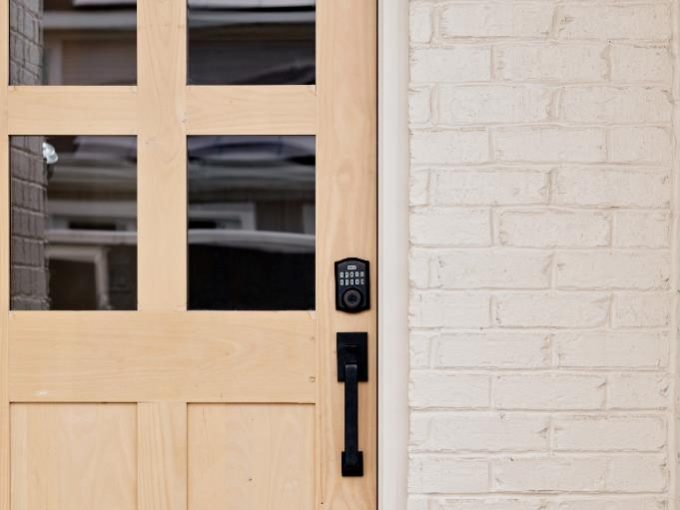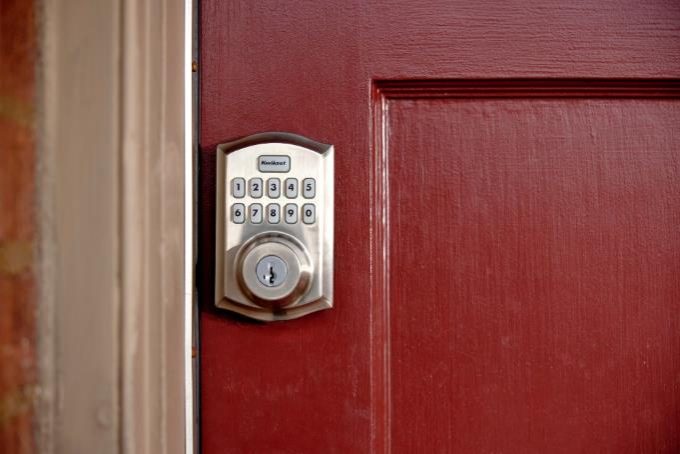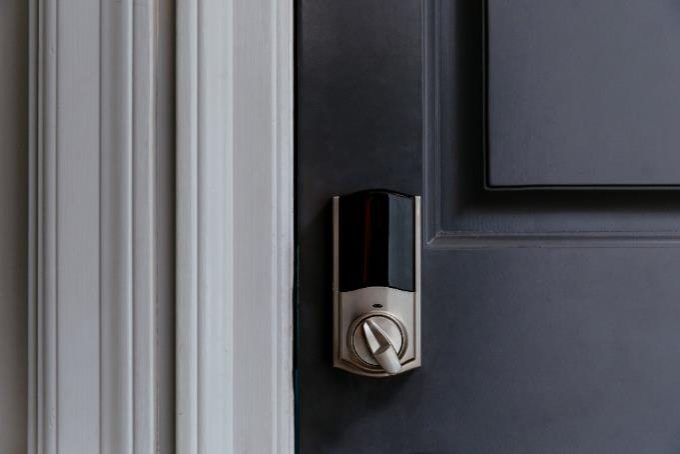Biometric authentication is changing how we secure our homes, workplaces, and even sensitive data. From traditional locks to advanced keyless entry systems, this technology has revolutionized security by providing an unmatched level of convenience and protection.
In this guide, we’ll explain what biometric authentication is, explore how biometric door locks work, and help you make an informed decision about upgrading your security measures.
What is biometric authentication?
Biometric authentication uses a person’s unique physical or behavioral characteristics—such as fingerprints, facial features, iris patterns, or voice—to verify identity.
Unlike traditional locks that rely on physical keys or access codes, biometric systems leverage distinct biometric data, making them far more secure and nearly impossible to replicate.
Biometric authentication also provides a layer of security that deters unauthorized access. Even if someone gains access to a physical key or pin code, they cannot bypass the system without the registered biometric input.
How biometric door locks work
Biometric door locks combine cutting-edge technology with practical design to create an intuitive and secure locking system. Here’s a breakdown of their functionality:
Modern biometric door locks often include additional features:
Key security features of biometric door locks
Biometric locks offer unparalleled security features, making them an ideal choice for homeowners and commercial properties alike. Here’s what sets them apart:
Types of keyless entry door locks
While biometric locks are a standout option, they are part of a broader range of keyless entry systems. Understanding the types of locks available will help you choose the right one for your needs:
Each lock type caters to specific security needs, so consider factors like compatibility, durability, and ease of use when making a choice.
Advantages of biometric door locks
Biometric door locks provide numerous benefits, making them a preferred choice for modern security:
Addressing potential challenges
While biometric door locks offer significant advantages, it’s essential to address potential challenges to ensure the best experience:
Choosing the right biometric door lock
When selecting a biometric lock, consider the following factors:
Biometric technology and smart homes
Biometric door locks are a cornerstone of modern smart homes. They integrate seamlessly with other security systems, offering advanced automation and convenience. Key benefits include:
These features make biometric locks an essential part of any comprehensive home security setup.
.
Why biometric door locks are the future
Biometric authentication is redefining the future of security. By upgrading to a biometric door lock, you can enjoy enhanced protection, convenience, and peace of mind. Ready to elevate your security measures? Explore the latest options today from Acme.
.
Are Smart Locks Safe?
.
Keeping your home secure from burglars and break-ins is a top priority. One of the first lines of defense is solid locks that provide a complete sense of safety, and smart locks do just that.
With modern technological advancements, smart locks from trusted names like Kwikset, Yale, and Schlage are becoming an increasingly popular way to secure your home. These locks utilize wireless communication protocols that allow you to lock or unlock your doors without a traditional key.
This guide will provide an overview of how smart locks work, their benefits and potential risks, and their security features.
How do smart locks work?
Smart locks may look like traditional locks in terms of their physical locking mechanism, but their method of operation significantly differs because they are electronically controlled. You can open smart locks in various ways, including:
Smart locks offer flexibility in terms of communication protocols and methods of operation, giving you plenty of options to choose the best smart lock for your home.
Smart locks use wireless communication protocols such as Bluetooth, Z-Wave, or Wi-Fi to control the locking and unlocking of a door. Each wireless connection type works a little differently.
Bluetooth is widely available on smartphones but requires close proximity to your home to operate the smart lock. Z-Wave also operates in close proximity but uses a central hub to connect. Wi-Fi compatibility enables the remote operation of your smart lock from anywhere in the world as long as you have access to a Wi-Fi connection.
.
Different types of smart locks
There are many types of smart locks available. One type is the retrofit lock, which fits directly over standard locks without replacing hardware. This is especially useful for renters who are not allowed to modify their existing deadbolt.
Most smart locks replace your regular locks entirely, requiring a new interior and exterior keyhole and deadbolt, complete with a new set of spare keys (in the rare case of malfunction) and, more importantly, a set of smart features.
In addition, you can integrate some smart locks with other home security systems, such as security cameras, doorbells, indoor alarm systems, and motion sensors.
Features and capabilities
Smart locks offer an array of impressive features to enhance the security of your home. Remote access lets you control your smart lock from various locations, offering convenience and ease of use.
Voice control and keyless entry are other smart lock features that offer an easy way to operate your door, especially when your hands are full.
Advanced security features, such as activity logs, provide detailed information on who has accessed your home and at what times. Some smart locks even allow you to assign temporary access codes for anyone you may need to let in your home when you’re not there. These temporary access codes are perfect for guests, dog walkers, technicians, delivery services, and the like.
.
Benefits of smart locks
Smart technology has revolutionized how we approach security and convenience. With remote access, smart locks can provide homeowners with unique security features and various benefits that traditional locks lack.
Convenience and accessibility
Smart locks provide the convenience of keyless entry, allowing you to open your door without a physical key using voice commands, smartphone applications, and other means.
This is beneficial when you want to avoid carrying a key, have your hands occupied, or have to grant access to visitors. It also eliminates the need to duplicate keys or rekey locks, saving money on locksmiths and increasing the security of your home.
Remote access and control
Smart locks let you connect your lock to smart devices such as smartphones, tablets, and computers, giving you remote control. Voice assistants like Amazon Alexa or Apple Siri can also operate your smart lock from virtually anywhere. These features can come in handy if you can’t reach your lock physically.
Another great feature of smart locks is the ability for your connected devices to receive real-time notifications when someone enters or exits your property. This provides an added level of security and peace of mind.
Integration with home automation systems
By providing multiple integration options with other home gadgets, smart locks can significantly improve your home’s overall security and convenience.
Integration with home security cameras lets you monitor who enters your home, view recorded footage, or even communicate with guests before unlocking your front door.
In addition, you can program smart locks to regulate lighting or adjust the thermostat, enabling you to create custom routines such as turning off all lights and lowering the thermostat when you leave.
Potential risks
While smart locks offer multiple security features, it is crucial to recognize the potential risks associated with this technology. Cyber attacks and technical issues are among the most common concerns, as they could jeopardize the safety of your property.
Hacking and cybersecurity
Despite significant advancements in smart technology, it is still possible to have your electronic devices hacked, including smart locks. Hackers may compromise the Bluetooth connection, breach the Wi-Fi network, or access phone data, leading to unauthorized control of the lock.
Weak passwords and outdated software can make these security breaches easier. Regularly update smart lock firmware, smartphone apps, and applicable passwords to increase your lock’s security. Utilize two-factor authentication on web and mobile apps to further increase security.
Despite these risks, smart locks provide superior safety and security compared to regular locks, which are commonly susceptible to lock picking.
Malfunctions and technical issues
Like any electronic device, smart locks may experience technical difficulties that can impact their ability to lock or unlock a door. Problems with the network or Bluetooth connection, software glitches, or hardware defects may result in a lockout or intermittent connectivity problems.
Sometimes, the issue could be as simple as low battery life, which you can resolve by replacing them. It is also important to ensure professionals install the lock correctly to avoid door jams and other electronic issues.
Tips to improve smart lock security
Most advanced technology is not foolproof and has vulnerabilities to cyber threats; smart locks are no exception. However, it is important to note that you can significantly reduce these risks with proper precautions and measures.
Use strong passwords
Using a strong password is one of the most critical measures for securing smart locks. Avoid creating weak passwords, such as simple phrases, important dates, or number chains like “123456,” as they are easy to hack.
To create a strong password, use a combination of upper and lower case letters, numbers, and special characters to increase the complexity and security of your system.
It is also crucial to keep your passwords confidential. Ensure your smart lock passcode differs from your other account logins, and change your password regularly. These steps effectively reduce the risk of criminals compromising your smart lock.
Regularly update firmware and software
Keeping your software systems up-to-date is vital for maintaining optimal performance and security. This involves updating your smart lock’s operating system, which can enhance connectivity speed and reliability.
It is also important to update the lock’s firmware, which you can do conveniently from your smartphone. Doing so can improve the lock’s motor controls and auto-locking mechanisms, ensuring optimal functionality.
In addition to updating the lock’s software, keeping the connected smart device updated is crucial to maintain efficient operation. Install all app and operating system updates promptly. These steps ensure the smart lock works seamlessly with your phone without performance or security issues.
Avoid connecting to public wi-fi networks
Connecting to public Wi-Fi networks can be risky as hackers can steal your information or install malware to control your apps and smart locks. It’s best to utilize private Wi-Fi networks secured with a strong, personalized password.
Another way to enhance online security is using a virtual private network (VPN). VPNs offer an extra layer of protection by masking your IP address and encrypting your data, making it difficult for cyber attackers to access your information.
Discover the best smart door lock systems from Vivint
Vivint’s smart locks offer reliable home safety and security with advanced technology, robust security features, durability, and seamless integration with existing smart home devices like voice assistants.
One of the standout features of Vivint’s smart locks is their remote accessibility, which allows you to control your lock status, grant access to visitors, and monitor access times from any location.
Additionally, you can create unique access codes and integrate the locks with doorbells and security cameras, further enhancing the safety of your home.
Embrace the peace of mind that comes with advanced smart lock technology. Invest in Vivint’s smart locks today, and feel confident knowing your home is protected around the clock, even when you’re away.
